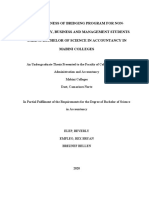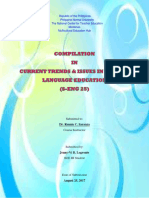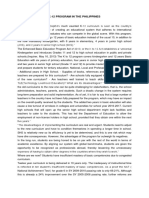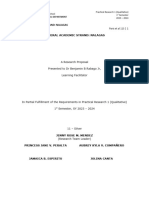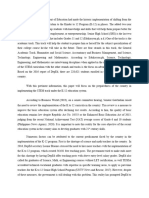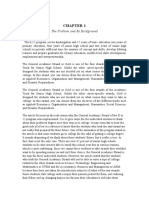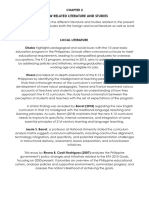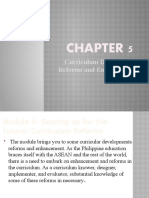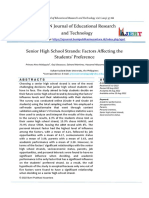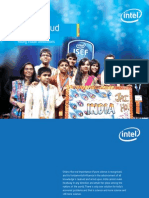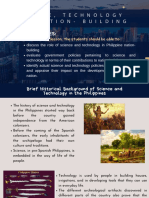0% found this document useful (0 votes)
148 views6 pagesAugust 20, 2018: Wrong Track in Senior High School?
The K-12 education system in the Philippines now offers different tracks in senior high school that are meant to prepare students for specific careers. However, students sometimes choose the wrong track, finding themselves unprepared for the college major they later select. This has led to the introduction of "bridging programs" - remedial courses students must take if their senior high school track did not align with their college program. However, these bridging programs represent additional time, effort and costs for students. Furthermore, their effectiveness in preparing mismatched students is questionable. The early tracking of students through different strands and tracks under K-12 can force wrong career choices that seriously impact students' education and opportunities.
Uploaded by
Edward JeremyCopyright
© © All Rights Reserved
We take content rights seriously. If you suspect this is your content, claim it here.
Available Formats
Download as DOCX, PDF, TXT or read online on Scribd
0% found this document useful (0 votes)
148 views6 pagesAugust 20, 2018: Wrong Track in Senior High School?
The K-12 education system in the Philippines now offers different tracks in senior high school that are meant to prepare students for specific careers. However, students sometimes choose the wrong track, finding themselves unprepared for the college major they later select. This has led to the introduction of "bridging programs" - remedial courses students must take if their senior high school track did not align with their college program. However, these bridging programs represent additional time, effort and costs for students. Furthermore, their effectiveness in preparing mismatched students is questionable. The early tracking of students through different strands and tracks under K-12 can force wrong career choices that seriously impact students' education and opportunities.
Uploaded by
Edward JeremyCopyright
© © All Rights Reserved
We take content rights seriously. If you suspect this is your content, claim it here.
Available Formats
Download as DOCX, PDF, TXT or read online on Scribd
/ 6












